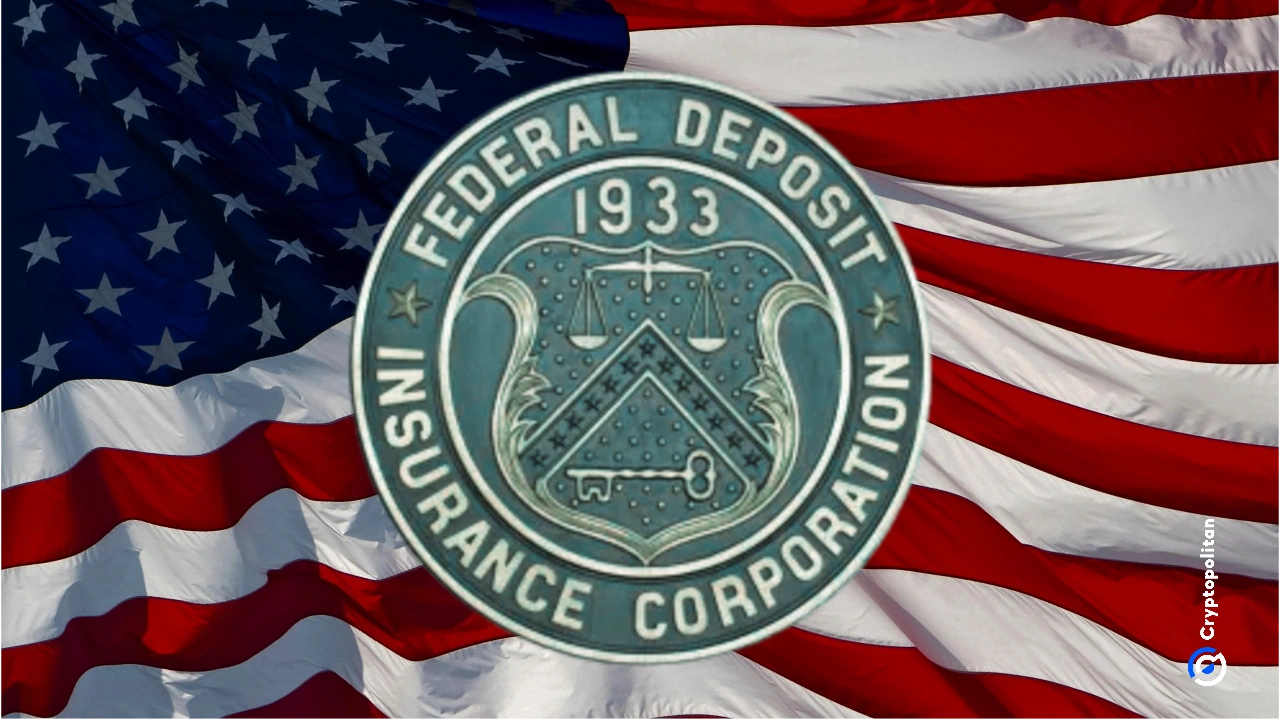The FDIC chair has confirmed that it is developing guidelines for tokenized deposit insurance. The guidance under development is expected to help banks and their partners understand how tokenized deposits fit into the existing insurance structure.
The Federal Deposit Insurance Corp. (FDIC) is preparing new guidance to help banks understand how deposit insurance should work when deposits are moved onto blockchain or other distributed-ledger systems.
FDIC open to integrating blockchain into traditional banking
Acting Chair Travis Hill confirmed the plan during an appearance at a Federal Reserve Bank of Philadelphia conference. He stated that the agency wants to give financial institutions clearer rules as they integrate digital asset technology into their systems.
Hill strongly believes that deposits should not lose their legal status simply because they move from traditional banking platforms into a tokenized form. As he puts it, “a deposit is a deposit.”
A tokenized deposit is usually a digital coin that acts as a claim on real funds held by a bank. This concept is different from stablecoins, which are digital tokens that are typically pegged to a fiat currency but are not automatically connected to federally insured deposit accounts.
With banks and other financial firms experimenting with blockchain technology, regulators have been under pressure to clarify how existing customer protections like deposit insurance apply in these new environments.
Many fintech companies are not banks, so they are not directly covered by FDIC insurance. To offer protection to their customers, they usually partner with FDIC-insured banks, which can make the accounts eligible for pass-through insurance.
But this system can fail if the fintech goes out of business or if the way customer accounts are set up is unclear. This has raised concerns about who must cover customer losses when a third-party platform collapses.
Rising consumer protection concerns
The rise of fintech platforms has caused customers to assume that their digital wallets or app-based accounts are insured, even when the platform itself is not a bank. Pass-through insurance can apply only when certain conditions are met, and regulators have shared concerns about some fintechs that do not communicate these conditions clearly.
This concern has grown as more fintech firms explore ways to offer tokenized financial products or integrate blockchain technology into their services.
The Deposit Insurance Fund (DIF), a central pillar of the U.S. financial system, designed to protect depositors when banks fail, saw its reserve ratio fall below the level required by law after 2020.
The fund is financed mainly by quarterly fees paid by insured banks, known as assessments.
The reserve decline after 2020 was due to the surge in deposits across the banking system during the pandemic. To address this, the FDIC has been rebuilding the fund over the past few years. The agency projected earlier this year that the DIF would reach its legal target ratio by the end of 2025, about three years earlier than previously expected.
Get seen where it counts. Advertise in Cryptopolitan Research and reach crypto’s sharpest investors and builders.
This articles is written by : Nermeen Nabil Khear Abdelmalak
All rights reserved to : USAGOLDMIES . www.usagoldmines.com
You can Enjoy surfing our website categories and read more content in many fields you may like .
Why USAGoldMines ?
USAGoldMines is a comprehensive website offering the latest in financial, crypto, and technical news. With specialized sections for each category, it provides readers with up-to-date market insights, investment trends, and technological advancements, making it a valuable resource for investors and enthusiasts in the fast-paced financial world.
